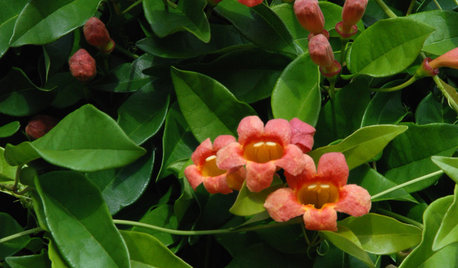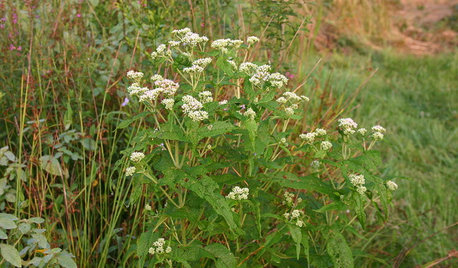July 30th was a good butterfly day!
bob_71
13 years ago
Related Stories

FALL GARDENINGWhat Monarch Butterflies Taught Me About Garden Design
Thinking like a butterfly leads to fresh perspectives in the garden and in life
Full Story
GARDENING AND LANDSCAPINGSwing Into National Hammock Day
Only one day to celebrate such a worthy pastime? Pshaw. Start on July 22 and let these photos inspire you to keep on rockin’
Full Story
GARDENING GUIDES20 Favorite Flowers for Butterflies and Bouquets
Discover perennials and annuals that do double duty as butterfly magnets and versatile cut flowers
Full Story
GARDENING FOR BUTTERFLIESBe a Butterfly Savior — Garden for the Monarchs
Keep hope, beauty and kindness alive in the landscape by providing a refuge for these threatened enchanters
Full Story
FLOWERS AND PLANTSHelp Monarchs and Other Butterflies by Planting Common Milkweed
Summer-blooming Asclepias syriaca is an important larval host plant for the monarch butterfly and attracts a number of pollinating insects
Full Story
GARDENING GUIDES6 Steps to Creating Your Butterfly Garden
Encourage these fanciful winged beauties to visit your garden while helping restore their fragmented habitat
Full Story
CALIFORNIA NATIVE PLANTSGreat Design Plant: Asclepias Is Attractive to Monarch Butterflies
Increase monarch butterfly populations in California by planting stunning native milkweeds
Full Story
GARDENING GUIDESGreat Design Plant: Butterfly-Friendly Crossvine
Colorful climber gives gardens a boost year-round with bountiful blooms
Full Story
GARDENING GUIDESGreat Design Plant: Common Boneset Helps Good Bugs Thrive
Support bees, moths and butterflies with the nectar of this low-maintenance, versatile and tactile prairie-style plant
Full Story
GARDENING FOR BUTTERFLIESGardening for the Bees, and Why It’s a Good Thing
When you discover how hard bees work for our food supply, you may never garden without them in mind again
Full Story






bananasinohio
jeanner
Related Professionals
Ashburn Landscape Architects & Landscape Designers · Elwood Landscape Architects & Landscape Designers · Ferndale Landscape Architects & Landscape Designers · El Reno Landscape Contractors · Hayward Landscape Contractors · Hickory Hills Landscape Contractors · North Potomac Landscape Contractors · Reedley Landscape Contractors · Burbank Fence Contractors · Claremont Fence Contractors · Draper Fence Contractors · Fort Worth Fence Contractors · Lomita Fence Contractors · Arroyo Grande Window Contractors · Greenwich Window Contractorsrunmede
jrcagle
runmede
bob_71Original Author
rsingley
runmede